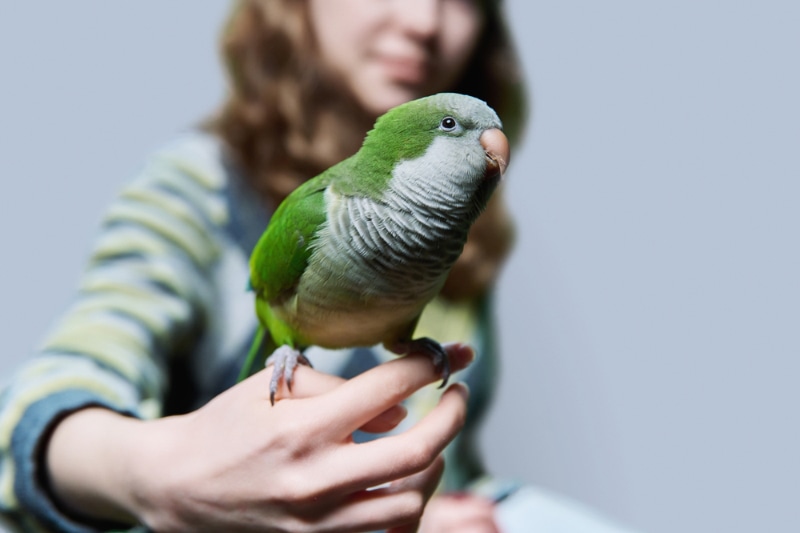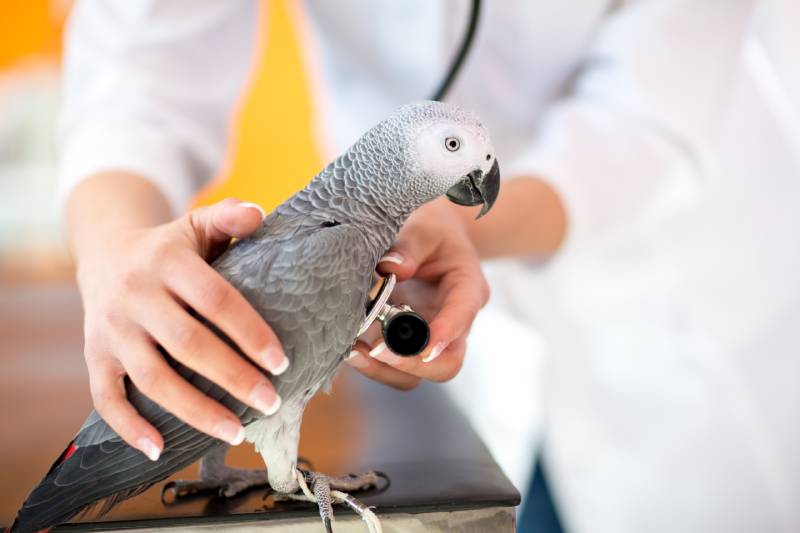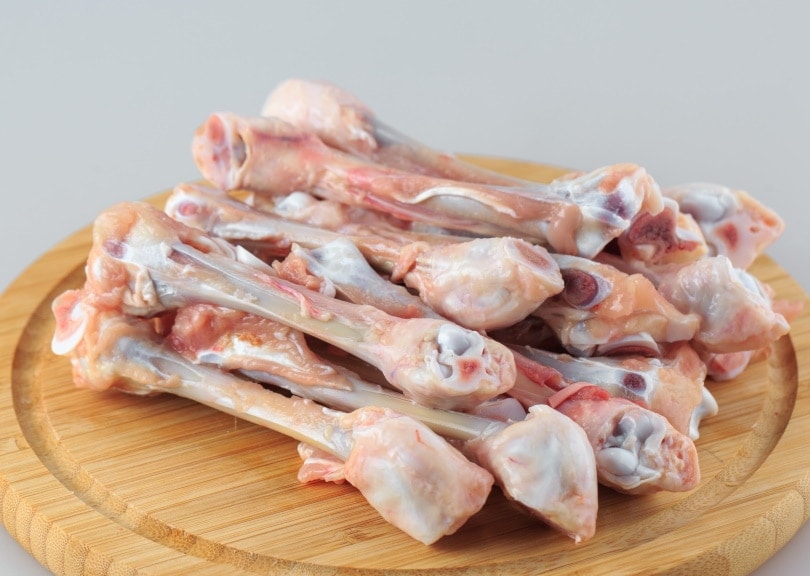How to Tell the Sex of Your Parrot: 3 Expert Tips (Vet Answer)
By Dr. Luqman Javed, DVM (Vet)
Updated on

Knowing whether your parrot is a male or a female is essential for a few reasons besides the fact that you may be looking for the perfect name. There are some behavorial issues linked with sex in parrots. In addition, some medical conditions are exclusive for one sex (such as issues with egg laying). However, telling the sex of a parrot can be a little more complicated than it would be with a cat or dog.
It can be challenging to identify your parrot’s sex because most parrots are monomorphic, which means that males and females look identical to us, and we aren’t able to distinguish the two just by visual appraisal. Here are a few tips to help you determine if your parrot is a boy or girl.
Sex Certification
If your parrot was purchased from a reputable breeder, they should come with documentation stating whether they are male or female. However, if your parrot came from a rescue or was acquired another way, this certification may not be available, so it will be up to you and your veterinarian to put in the guesswork.
How to Tell if Your Parrot Is a Male or Female
1. Species With Sexual Dimorphism
If you’re in luck, you might adopt a parrot of a species that displays sexual dimorphism. What this means is that, for such species, it’s fairly simple to tell a healthy adult male apart from a female. Fortunately, some of the most popular parrots do display sexual dimorphism. If you’ve adopted one of these parrots, you might be in luck:
| Parrot | Male | Female |
| Budgie (Melopsittacus undulatus) | Cere (nostril area) of a healthy male is blue. | Cere (nostril area) of a healthy female is brown. |
| Cockatiel (Nymphicus hollandicus) | In gray cockatiels, the male has a yellow face, crest, and neck. He has bright orange cheek patches and the underside of his wings are black. | In gray cockatiels, the female has less yellow demarcations on the face and her cheeks appear duller than a male’s. The underside of her wings are barred. |
| Eclectus (Eclectus) | Males have an emerald colored plumage. | Females have a deep red/purple colored plumage. |
| Ringneck parrot (Psittacula krameri) | Sexually mature female has a very dark colored beak and a black band around his neck. | Females have a slightly paler beak and a very subtle band or no band at all. |
A few other species may have subtle differences between males and females; however, these differences are not 100% accurate in determining the sex of an individual. For example, the under-tail feathers of a male Senegal parrot (Poicephalus senegalus) are almost always entirely yellow, whereas those of the female are both yellow and green. However, this isn’t always the case and exceptions might exist.
Unfortunately, the vast majority of parrots are sexually monomorphic and display very little to no reliable variation between males and females.

2. Egg Laying
Egg laying is a trait unique to female parrots, and female parrots can lay eggs in the absence of a male. However, this is by far one of the most unreliable means of sexing a parrot, as many female parrots may simply never lay an egg in captivity, or do so at a very advanced age (at times when they are over 10 years old). Therefore, to say a parrot is a male because you haven’t seen an egg is inaccurate. However, at the odd chance that a parrot does lay an egg, it’s guaranteed that the individual is a female.
It’s also worth noting that not all females can lay eggs successfully, and egg binding (difficulty passing an egg) is a potentially fatal condition. Therefore, it’s best to get your parrot sexed rather than waiting for an egg.
3. DNA Testing
This is by far the most accurate way of determining whether a parrot is a male or female. There are several ways a veterinarian can determine the sex of your parrot by collecting a sample to check for the DNA of a male or female. There are two approaches to this method:
- Feather sexing
- Blood sexing
Each method yields relatively quick results, and the choice of method is something you should discuss with your veterinarian. Though many owners are opposed to having blood drawn from their pet, it is sometimes well worth it, as a simple blood collection can also be used to screen your pet for getting a better understanding of their health status. This can be done during their wellness checkup to ensure they’re in good health.
The introduction of the DNA sexing methods has largely replaced the older practice of surgical sexing in parrots, which is considered invasive and unnecessary as long as these alternatives exist.

Why Does Parrot Sex Matter?
A fundamental step to enhancing your relationship with your pet is naming them. If you are unfamiliar with their sex, you might find yourself one day learning that Charlie, your “male” parrot, is actually a female producing eggs.
Developmental Changes
To be ready for the eventual changes a parrot will go through as they mature, their owner must be aware of their sex. Additionally, if you want to breed your parrot, it is essential to know if they are a male or a female, or on the contrary, you may want to prevent your pair of parrots from breeding.
In some species, there are sex-related behavioral issues that might present themselves. Therefore, knowing your pet’s sex is beneficial.
Sex-Specific Health Issues
Knowing your parrot’s sex is also helpful because, depending on the sex of your bird, your perception of their health may alter significantly. For instance, a female parrot sitting in the corner, breathing heavily with her feathers puffed up might be experiencing issues with egg laying. However, a male with the same condition might be experiencing
Conclusion
There are many parrot species in this world, and while their appearance can help us determine their species, the same cannot be said about their sex. There are several ways to determine the sex of parrots, but it’s crucial to understand that a physical or behavioral assessment is not entirely reliable.
It is always preferable to speak with a veterinarian who can offer proof of the parrot’s sex that is supported by science. The safest and most reliable identification techniques are regarded to be feather or blood DNA testing.
Featured Photo Credit: JWPhotoworks, Shutterstock











